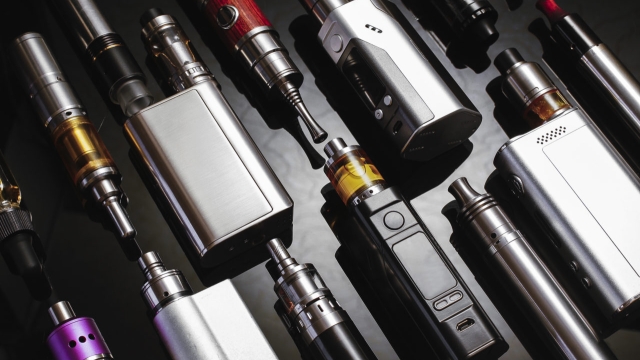As we dive into the world of smoking alternatives, one topic that has been gaining significant attention in recent years is the e-cigarette, or vape. With the rise in popularity of these devices, the debate surrounding their safety and efficacy has become increasingly heated. Supporters argue that e-cigarettes provide a healthier alternative to traditional tobacco smoking, while critics express concerns over potential health risks and the long-term effects of vaping. In this article, we aim to shed light on the truth behind e-cigarettes, exploring their mechanics, potential benefits, and examining the scientific evidence to uncover the facts amidst the vape debate. So, let’s embark on this journey together as we delve into the world of e-cigarettes and discover what lies beyond the vapor clouds.
The History and Evolution of E-Cigarettes
E-Cigarettes, also known as vape pens, have become increasingly popular in recent years. These devices were first introduced to the market in the early 2000s as an alternative to traditional cigarettes.
The concept of e-cigarettes dates back even further, with the first patent for a smokeless non-tobacco cigarette being filed in 1963. However, it wasn’t until the early 2000s that the technology advanced enough to create a viable and commercially available product.
The first commercially successful e-cigarette was developed by a Chinese pharmacist named Hon Lik in 2003. Lik, who was a heavy smoker himself, wanted to find a way to reduce the health risks associated with smoking. He used ultrasound technology to create a device that vaporized a nicotine solution, providing users with a similar sensation to smoking.
Since then, e-cigarettes have undergone significant changes and improvements. Early models resembled traditional cigarettes in shape and size, but newer versions have evolved to be sleeker and more customizable. The introduction of refillable tanks and different flavor options has further increased their popularity.
Site
In conclusion, the history of e-cigarettes traces back to the 1960s, but it was not until the early 2000s that they became widely available. The continuous evolution of e-cigarette technology has led to a wide variety of options for users, making them a popular choice for those looking for an alternative to traditional smoking.
2. The Health Implications of Vaping
In recent years, the rise of e-cigarettes, commonly known as vapes, has sparked an intense debate about their health implications. Advocates argue that vaping is a safer alternative to traditional smoking, while detractors express concerns about potential risks. So, what does the research say about the health effects of e-cigarettes?
The long-term consequences of vaping are still not fully understood. However, studies have shown that e-cigarettes pose fewer health risks compared to traditional tobacco cigarettes. Unlike conventional smoking, vaping doesn’t involve the combustion of tobacco, which releases harmful toxins and carcinogens. Nevertheless, it’s important to note that e-cigarettes still contain nicotine, an addictive substance, which can have adverse effects on cardiovascular health and increase the risk of addiction.
While e-cigarettes may be less harmful than traditional smoking, they are not without their own set of risks. The inhalation of aerosol produced by vaping can potentially irritate the lungs and airways. Additionally, the heating elements used in e-cigarettes, such as coils, can release toxic metals into the vapor, although the levels are generally lower than in traditional cigarettes. Furthermore, there have been cases of severe lung injuries associated with vaping, highlighting the need for further research and regulation in this area.

In conclusion, the health implications of vaping are still a topic of ongoing scientific investigation. While e-cigarettes are considered to be a less harmful alternative to traditional smoking, they are not entirely risk-free. It’s crucial for individuals, especially non-smokers and young people, to weigh the potential benefits against the potential risks before choosing to vape. Clear and accurate information about the health effects of e-cigarettes is essential for making informed decisions about their use.
Regulations and Controversies Surrounding E-Cigarettes
Firstly, let’s examine the regulations surrounding e-cigarettes. Many countries have implemented specific laws and regulations to govern the sale and use of these devices. Some countries have classified e-cigarettes as tobacco products, subjecting them to similar restrictions and regulations. These regulations often include age restrictions, advertising limitations, and the requirement for health warnings on packaging. Additionally, some jurisdictions have banned the use of e-cigarettes in public places, mirroring restrictions placed on traditional smoking.
Secondly, there are ongoing controversies surrounding e-cigarettes. Critics argue that the long-term health effects of vaping are still not well understood, and that the lack of regulation and oversight in the industry may pose risks to users. Concerns have been raised about the potential for addiction due to the nicotine content in e-cigarettes, as well as the possible harmful effects of inhaling aerosolized chemicals and flavorings. Additionally, there is debate over whether e-cigarettes serve as a gateway to traditional smoking, particularly among young people.
Lastly, recent reports of severe lung injuries associated with vaping have further fueled the controversies surrounding e-cigarettes. These incidents have prompted investigations into the safety of vaping products and led to increased calls for stricter regulations. However, it is important to note that some experts argue that these cases are primarily linked to the use of illicit or black market vaping products containing THC or other substances.
In summary, while regulations have been put in place to govern the use of e-cigarettes, controversies continue to surround their use. Ongoing research and close monitoring of the industry are necessary to fully understand the potential risks and benefits associated with these devices.



